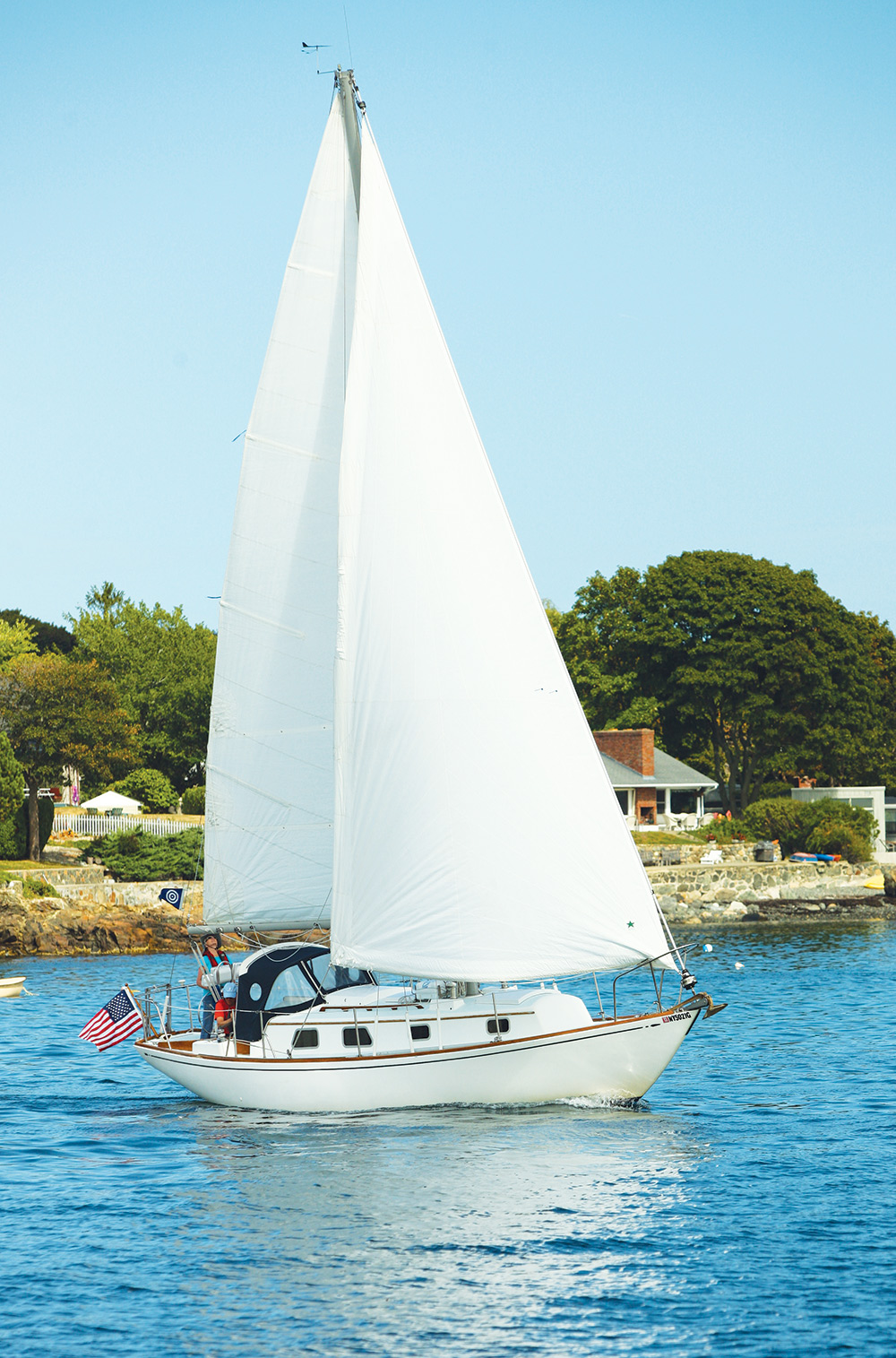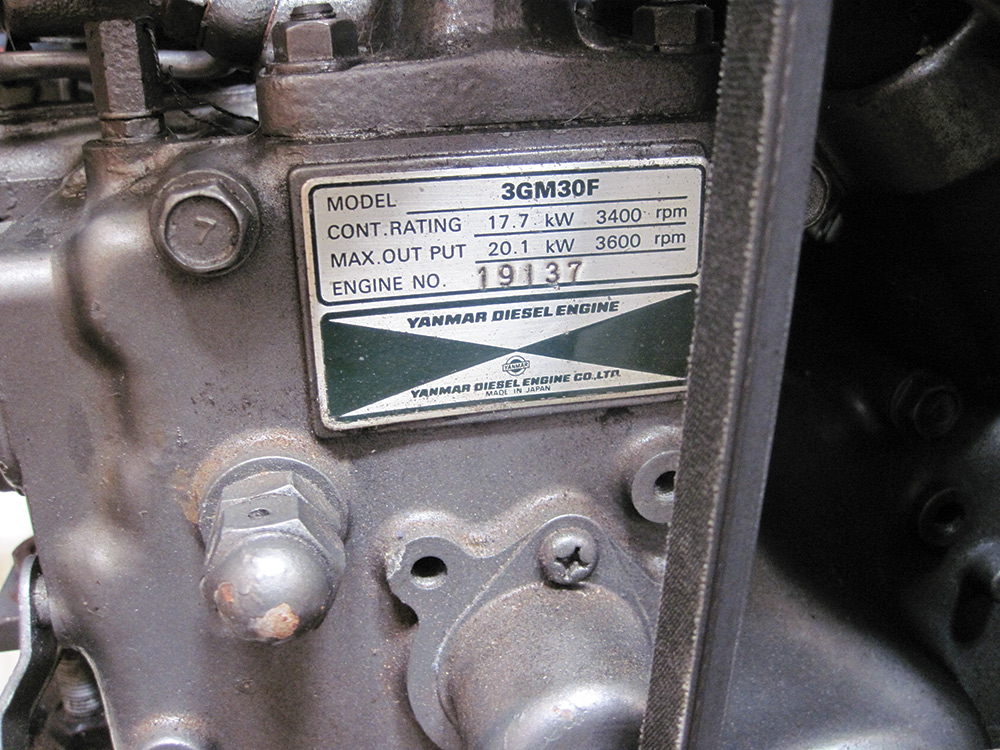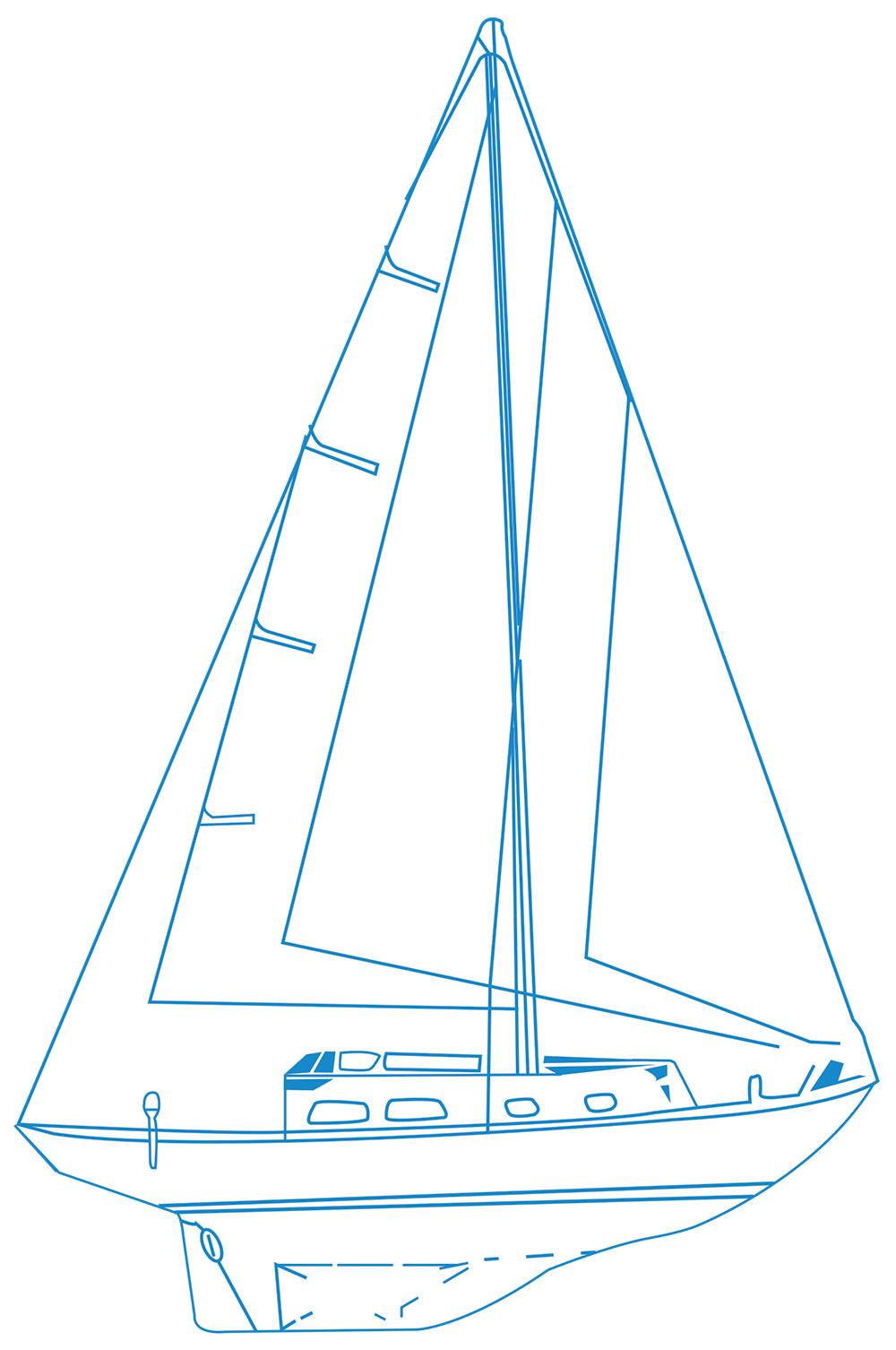RETROFITS: Bristol 32
A classic, tough boat becomes a pleasure to sail with cruise-worth upgrades

The search for a vintage Bristol 32 sloop took us to six states by road trip and to three others via online research. We wanted the boat that has often been called the little sister to the classic Bristol 40 with the same eye-catching sheer, slender beam and graceful overhangs.
We confirmed that Bristol 32s, designed by Ted Hood, were solidly constructed, a declaration often echoed in Internet forums by past and present owners. The 17-year production run churned out 322 hulls, starting in 1966, which meant the oldest are now approaching the half-century mark.
Hull design and sailing technology have certainly changed since the first Bristol 32s were launched, but the classic design and build quality made it a very attractive candidate for a retrofit, assuming we could find the right boat. Prices on the used boat market in 2015 ranged from $12,500 for a 1967 model with questionable engine to $39,000 for a 1983 model in turnkey condition.
A bidding war staged by a zealous Connecticut broker pushed us away from a Bristol 32 that was built in the late 1960s, and although we were disappointed, it turned out for the better. We eventually located a newer model in better shape with the gelcoat intact, showing only minor crazing and a few deep scratches.
We had already passed on Bristol 32s still powered by the original Universal Atomic 4 gasoline engine. Replacing it with a new diesel would have escalated the retrofit budget beyond our means. As a rule of thumb, installation costs twice the engine purchase price, which for us translated to about $27,000.
We also rejected a 32 built in the mid-1970s because its Yanmar diesel was a two-cylinder rather than a three-cylinder model. Bristol 32 owners had warned us that given the sloop’s nearly 11,000-pound displacement, which would increase when loaded for cruising, the smaller engine might underperform in a stiff current or choppy sea.
The 1979 Bristol 32 we ultimately settled on had a Yanmar freshwater-cooled 3GM-30F with fewer than 500 hours. Armed with serial numbers taken off the engine block, I called Yanmar’s customer service center and was informed that while the boat may be advertised with a 2012 engine, it was actually manufactured in 1996. A bit of detective work revealed that the most recent owner had purchased the rebuilt engine at a boat show in 2012. Fortunately, the work had been done by a certified Yanmar service center in upstate New York, and from that shop we learned the engine had been originally installed aboard a Beneteau. During its use, seawater had entered through the exhaust elbow and caused plenty of damage. Not wanting to wait for repairs, the Beneteau owner simply ordered a new engine. So that was how the rebuilt model ended up in the Bristol.
A marine surveyor declared the engine sound, stating that if it was properly maintained, it would last another dozen years or longer. He also determined the hull and deck had no structural weaknesses or significant moisture. Clint Pearson, former owner of Bristol Yachts, constructed the 32s with molded, high-impact reinforced polyester resin, the woven roving hand laid-up with no fillers. In other words, it has a smaller chance of delaminating than other construction methods.

Although the boat was equipped with radar, the mast bracket extended beyond the rim of the pie dish so that the jib chafed against it. The surveyor also cited trace moisture readings along the bow pulpit and advised loosening and rebedding the fittings with marine caulk. He also recommended rebedding the stanchions. The mainsail needed replacement. The hanked-on, 150% headsail was salvageable, but it would be too far off the deck at the foot if we had it re-cut for a roller furling system.
We purchased a Profurl furling system from Defender for $2,083. The Dacron mainsail with two reef points and the 135% furling jib came from Doyle Sailmakers for $2,370 and $1,892, respectively. The boat’s lazy jacks and reef lines were in good shape.
We were content with the Edson steering wheel mounted aft in the cockpit. Earlier Bristol 32s had tillers, which explained why the primary winches were bolted forward on the coaming. Dieter Empacher, who was the chief draftsman and designer for Ted Hood in the 1960s and 1970s when Hood’s boatbuilding operations were in Marblehead, Massachusetts, confirmed as much.
“I was working in Ted’s design office. He always came in during the evening and we talked about what I had drawn,” recalled Empacher, who earlier this year sold his beloved Bristol 35.5. “Ted liked the 32. It had what was the standard profile for that time.”
The two primary winches were installed to either side of the companionway since that’s where the helmsman would be while using a tiller. The steering wheel option forced solo-sailing helmsmen to briefly leave the pedestal when tacking or trimming.

He also noted that the Bristol 32 sails comfortably in a big sea but may be “a little too soft for bluewater sailing.” Even so, a few owners extended the transom by a foot so they could make the minimum length for the Newport-to-Bermuda Race.
Empacher agreed with our marine surveyor that a sloop with minor modifications could easily handle sailing from New England to Florida, then passage to the Caribbean. “This boat wasn’t built as a daysailer,” he said. “It’s a cruising boat.”
And that’s exactly what we had in mind: classic design, full-keel rather than centerboard, medium draft, tough build and upgraded with equipment that would make it a pleasure to sail.
With the boat’s title in hand, we rebedded the bow pulpit and stanchions, then replaced the scupper drain hoses, the tired mainsheet, jib sheets, frayed main halyard, jib halyard, topping lift and boomvang control line. The caulk amounted to $25, the new sheets and lines were $750, and the drain hoses $40, all from West Marine.
We sanded and varnished the teak toerails, coaming trim and coachroof grabrails, using a quart of StarBrite teak cleaner and a can of Epifanes gloss clear varnish. Sensing possible futility, instead of varnish we chose to apply StarBrite Premium Gold Teak Oil to the custom cockpit sole. The brightwork required $100 in materials plus brushes, sandpaper and several hours of sweat equity.
Although the engine didn’t require repair, we changed the oil, replaced the Racor water separator in the fuel line, the impeller, oil filter and two belts. The total for parts was $175 purchased from a Yanmar dealer.
While the boat was slung for a bottom inspection, we had the yard install a Raymarine i40 Bi-Data depthsounder and transducer, which cost $270 plus $180 labor. One of the boat’s two batteries was replaced with a 12-volt Duralast marine battery from an auto supply store. We also purchased a Victron Energy BMV dual battery voltage monitor for $207 and installed it in the saloon. As part of the electrical upgrade, we added a Ganz flexible marine solar panel for $148, to trickle charge the batteries.
The boat lacked a fuel gauge but Bristol 32 owners we spoke with convinced us to stick with the present system of using a wooden stick to measure the diesel level in the tank. A bigger interior upgrade came in the form of a new ENO Open Sea two-burner stove that came in just under $1,000.
A big issue that needed to be immediately rectified was the lack of a holding tank and Y-valve diverter for the head. Installing a new holding tank was problematic for a variety of reasons, not the least of which was space constraints. We ended up designating one of the two water tanks under the V-berth as a holding tank and installed a Jabsco Y-valve from Jamestown Distributors for $64.
The boat’s ICOM VHF base unit radio was crackling and temperamental so we replaced it with a Uniden two-way from a big box electronics store for $110. We were able to repair the cockpit plug-in for the remote microphone.
The retrofit concluded with installing the required sacrificial zincs under the waterline, and for good measure we tossed a fresh oil-absorbing sock into the bilge. The total cost of these items was $55. The six-person Zodiac life raft was expired but we had it repacked for $1,000.
We had hoped to install refrigeration and an autopilot, but limited funds left us with the roomy icebox and a manual wheel-lock knob on the pedestal. The addition of these two features would have pushed the purchase and refit total to over $40,000. Instead, we were able to keep the total cost to a bit over our original $35,000 budget.
PRICE LIST
1. Dacron mainsail with two reefs: $2,370
2. Furling 135% Dacron jib: $1,892
3. Profurl roller-reefing system: $2,083
4. Marine caulk: $25
5. Mainsheet, jibsheet, main halyard, jib halyard, boom vang line, topping lift: $750
6. Scupper drain hose: $40
7. StarBrite teak cleaner: $16
8. Epifanes gloss clear varnish: $36
9. StarBrite Premium Gold Teak Oil: $34
10. Impeller, Fram oil filter, Racor fuel-water separator, two belts: $175
11. Raymarine Bi-Data depthsounder and transducer plus installation: $450
12. Two Lewmar EVO 30 ST self-tailing winches: $1,945
13.12-volt Duralast marine battery: $114
14. Victron Energy BMV dual battery voltage monitor: $207
15. Ganz flexible marine solar panel: $148
16. ENO Open Sea two-burner stove and oven: $1,000
17. Jabsco Y-valve diverter: $64
18. Uniden two-way VHF marine base unit radio: $110
19. Oil absorbent sock and sacrificial zincs: $55
20. Repack and recertify six-person life raft: $1,000
Retrofit total: $12,514
1979 Bristol 32
Purchase price: $24,500
Materials: $12,514
Refit is 51% of purchase price
Total price after refit: $37,014
SOURCE LIST
Defender, www.defender.com, 800-628-8225
Doyle Sailmakers, www.doylesails.com, 800-943-6953
Hamilton Marine, www.hamiltonmarine.com, 800-639-2715
Jamestown Distributors, www.jamestowndistributors.com, 800-497-0010
West Marine, www.westmarine.com, 800-262-8464
Yanmar, http://us.yanmar.com, 800-872-2867

Comments